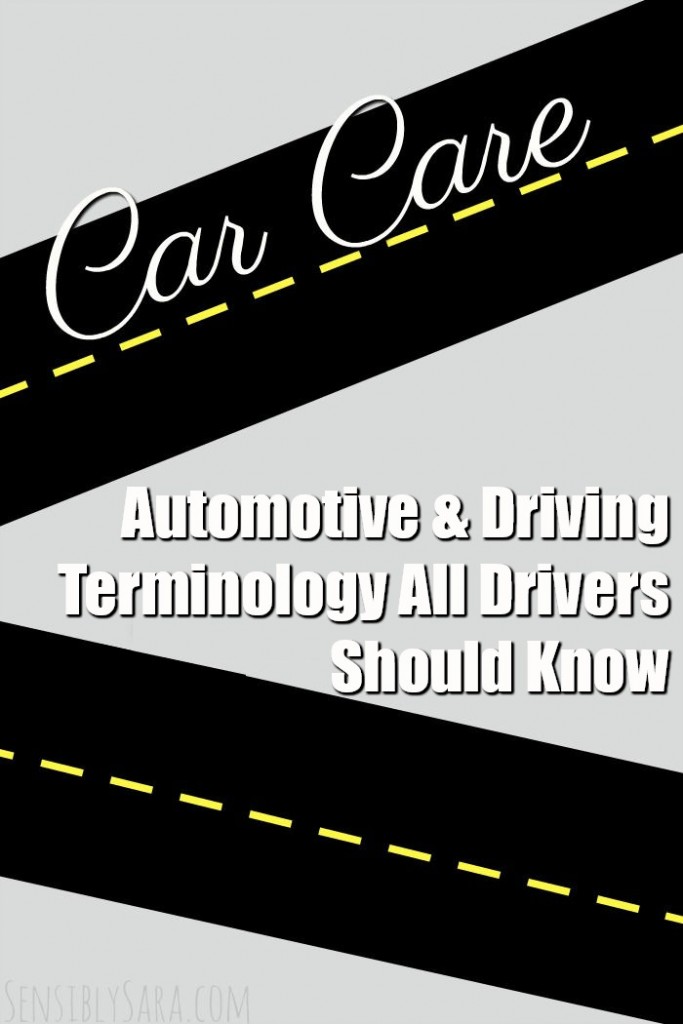Maybe you just purchased a new vehicle or perhaps you’ve been driving the same vehicle for the past 5 years. Either way, you may not know what some automotive terms actually mean. For example, do you know what hydroplaning is or what towing capacity means? Well, check out the list of automotive and driving terminology below. I have even included the definitions right from the experts.

**Full Disclosure: This is a sponsored post. All opinions are my own.
Adaptive Cruise Control – Adaptive cruise control is “capable of automatically adjusting the speed of a vehicle to match the speed of the car or truck in front of it. If the lead vehicle slows down, adaptive cruise control can automatically match it. When traffic picks back up, these automatic systems are also capable of acceleration.”
Adaptive Headlights – Adaptive headlights “make driving at night or under low-light conditions safer, by adjusting the car’s headlights to curves in the road. Rather than pointing directly at the space in front of the vehicle, they adjust to illuminate the area that the car will occupy next.”
All-wheel Drive (AWD) vs. Four-wheel Drive (4WD) – “All-wheel-drive systems power both the front and rear wheels all the time. Four-wheel drive systems power all four of a vehicle’s wheels.”
Anti-locking Braking System (ABS) – Anti-locking braking systems “are active safety features designed to help drivers retain steering control by preventing wheels from locking up during an episode of heavy braking.”
Electronic Stability Control (ESC) – Electronic stability control is a technology that “drivers maintain control of their vehicle during extreme steering maneuvers by keeping the vehicle headed in the driver’s intended direction, even when the vehicle nears or exceeds the limits of road traction.”
Hydroplaning – Hydroplaning “is when a vehicle starts sliding uncontrollably due to the tires encountering more water than the treads can displace.”
Insurance Institute for Highway Safety (IIHS) – The IIHS is “an independent, nonprofit scientific and educational organization dedicated to reducing the losses — deaths, injuries and property damage — from motor vehicle crashes.”
Lane Departure Warning (LDW) System – A LDW system is “an advanced safety technology that alerts drivers when they unintentionally drift out of their lanes without a turn signal.” Miles Per Gallon (MPG)- Miles per gallon is “the measurement of the distance in miles that a vehicle can travel using only one gallon of fuel.”
National Highway Traffic Safety Administration (NHTSA) – The mission of the NHTSA is to “save lives, prevent injuries and reduce economic costs due to road traffic crashes, through education, research, safety standards and enforcement activity.”
Tire Pressure Monitoring System (TPMS) – A TPMS “uses sensors to continuously monitor pressure in the tires and warn you with a dashboard symbol when tire pressure is dangerously low.”
Towing Capacity – A vehicle’s towing capacity is “the maximum weight it can haul without causing unsafe conditions or harming the vehicle.”
Traction Control – Traction control on a vehicle is “an active vehicle safety feature designed to help vehicles make effective use of all the traction available on the road when accelerating on low-friction road surfaces.”
Transmission – A vehicle’s transmission is “a series of components that receive power from the engine and transmit this power to the wheels of the car.”
Vehicle Identification Number (VIN)– A VIN is “the 17-digit name made up of numbers and characters, that an automobile manufacturer assigns to an individual vehicle.”
Visit Zeigler Chrysler Dodge to find a car that fits your needs!
Leave a Reply